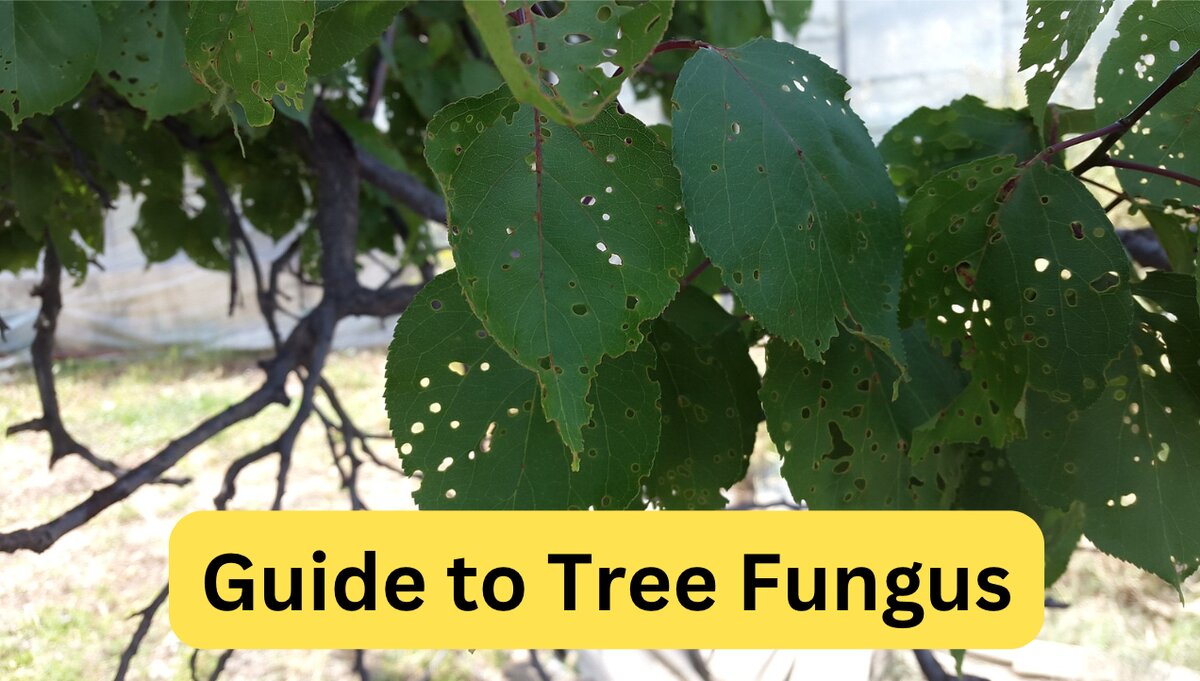
Saying goodbye to your favorite tree is like saying goodbye to an old friend. Take good care of your tree and you can help delay this goodbye by protecting it against the many common types of tree fungus.
Knowing fungal disease symptoms, treatment methods, preventative measures, and when to call an arborist will give you a better chance of keeping your woody friend alive. So we’ve rounded up 10 fungal diseases to help you act fast to save your tree.
How Do Trees Get Fungus?
Trees are exposed to fungal spores in many ways. Minuscule spores travel from tree to tree through:
- Air
- Splashing water
- Contaminated tools
- Soil
- Insects
As these spores land on your tree, they may penetrate its wood, fruits, or leaves either through open wounds or no wounds at all.
It’s essential to keep your trees healthy. Trees under stress due to drought conditions, winter injuries, or vandalism (like initials) are more vulnerable to fungal spores.
How to protect your tree from fungal disease? Ensure your tree has enough moisture and nutrients in the soil, is properly pruned, and has plenty of exposure to sunlight.
What are Signs of a Tree Fungal Disease?
Different fungal diseases will cause varying symptoms in your trees, so always be on the lookout for changes. If anything is out of the ordinary for your tree, it’s a good reason to call a certified arborist.
Fungal disease symptoms may include:
- Abnormal growths
- Wilting or falling of leaves or needles
- Discoloration
- Depressions in the wood
- Scabs in fruits
Types of Fungal Diseases in Trees
Various kinds of fungus can grow on trees and can cause symptoms such as yellowing leaves, thinning foliage, root rot, and reddish ooze flowing down the bark. To help you identify some of the most common types of fungus on trees, we’ve compiled a list of these top 10 below:
1. Thousand Cankers Disease
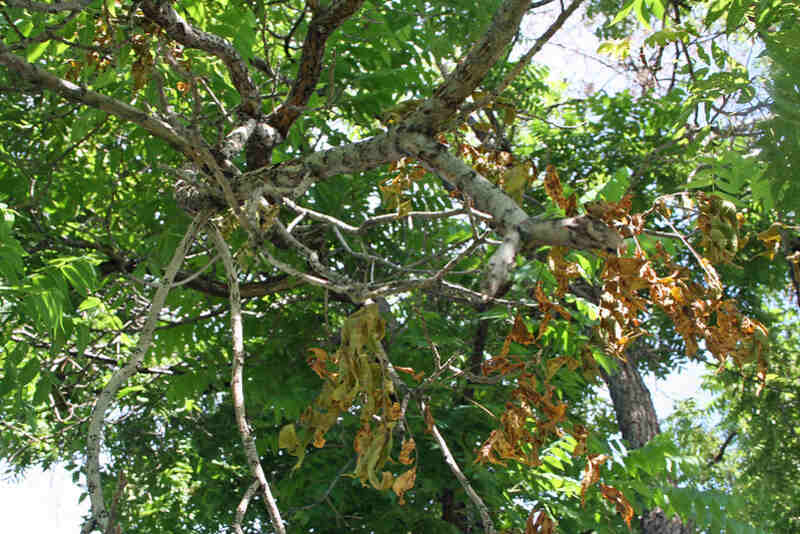
Trees affected: Black walnut trees are highly susceptible.
Symptoms: Symptoms of this fungal disease include cankers, yellowing of leaves, and foliage thinning.
Cankers may girdle and kill individual limbs, causing the tree to decline. Cankers may bleed and leave a dark ooze or stain on the bark’s surface. Peel away the bark, and you may find walnut twig beetle galleries.
Causes: Walnut twig beetles carry the fungus Geosmithia morbida. As these beetles tunnel into the bark to complete their life cycle, they cause the cankers to form.
As the cankers build up in numbers over time, they halt water and nutrients moving throughout the tree, causing it to die.
Season: The walnut twig beetle is most active in the spring between April and June.
Treatment: There is no cure for thousand cankers disease, but here is what to do:
- Remove or burn all infested woodpiles in the winter months.
- Help prevent tree stress by providing proper irrigation and fertilization.
- Remove trees with less than 50% of living crown to reduce the buildup of walnut twig beetles.
Risk: As cankers develop, your tree will likely die within 10 years.
2. Phytophthora Root Rot
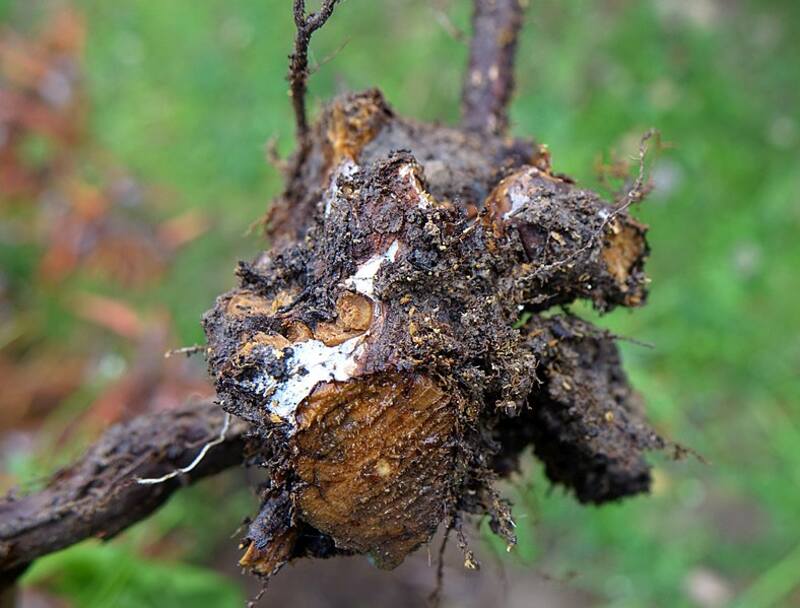
Trees affected: True firs, Douglas-firs, spruces, and eastern white pines are highly susceptible to phytophthora root rot. Trees showing some tolerance are some species of firs, particularly Turkish and Momi.
Symptoms: Trees that quickly develop reddish-brown needles and exhibit dieback may have phytophthora root rot. Symptoms include reduced or stunted growth, red-brown needles, needle loss, root decay, or bleeding cankers.
Causes: Phytophthora root rot is a soil-borne fungal disease that spreads from an infected area to a healthy one through the water in the soil or on the surface. During cold or dry periods, resting spores called chlamydospores and oospores develop. These spores can survive for many years in the ground or plant.
When temperatures exceed 59 degrees, these spores germinate and form spore-producing structures called sporangia, which release zoospores. These zoospores can swim for up to an hour in the soil water to find vulnerable roots or swim to a healthy area by overflowing surface water.
These spores then penetrate the plant’s roots and form infectious mycelium. As the mycelium spreads through the roots and stem, the tissue will decay and prevent essential nutrients from reaching the rest of the tree.
Season: New infections can occur when the temperatures exceed 59 degrees.
Treatment: It’s essential to practice preventative measures as there are no treatments for this disease.
How to safeguard your trees from phytophthora root rot:
- Buy and plant only healthy seedlings from a registered grower.
- Do not plant in a field known to be infected.
- If your nursery plants have reddish-brown roots or other phytophthora root rot symptoms, do not plant them.
- Avoid over-fertilizing or overwatering your trees.
Risks: Phytophthora root rot is lethal to your tree.
3. Hypoxylon Canker
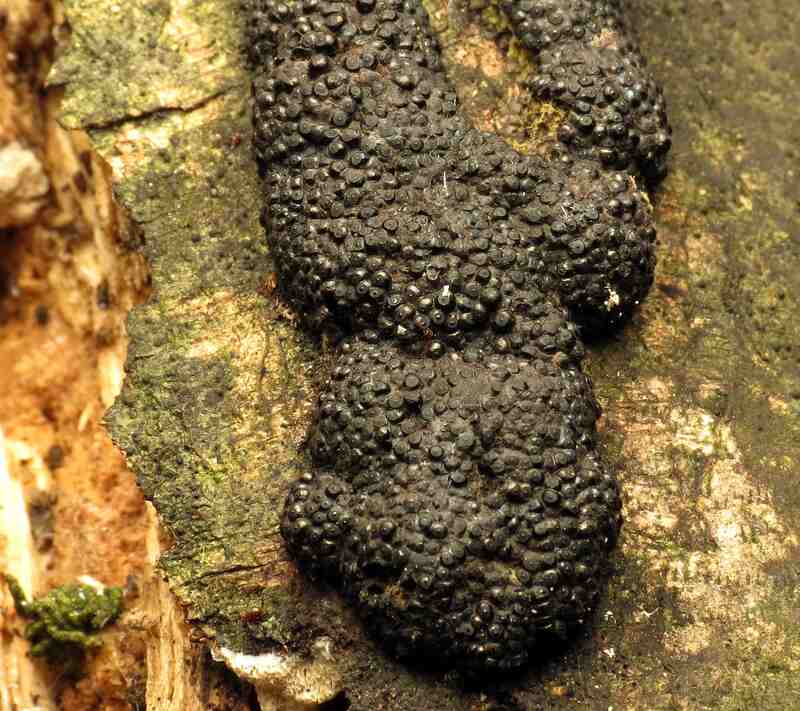
Trees affected: Oak trees are the most common hosts of this disease.
Symptoms: Hypoxylon canker is a fungal disease that appears as a dead lesion on limbs, branches, and trunks. The canker develops right under the bark. Leaves begin to yellow or brown. Reduced twig growth or death of branches may occur.
After the death of limbs or the tree, the bark may fall off and expose a thin mat of fungal hyphae packed together (stroma), forming a hard crust on which spores develop.
Causes: Hypoxylon atropunctatum is the fungus that causes the hypoxylon canker of oak trees. Trees that are stressed, weakened by drought, or injured are more susceptible to this fungal disease than healthy trees. The fungus enters the tree through wounds and then causes decay in the sapwood.
The mat of fungal hyphae produces brownish conidia (asexual fungus spores) that the wind blows from tree to tree, causing new infections. The stroma color soon changes to silver and then black as the fungus’s sexual state develops.
As the stroma develops, masses of dark spores ooze out on the surface, and wind, rain, and insects begin to spread them.
Treatment: There is no effective control for this disease. The Oklahoma Cooperative Extension Service recommends removing or burning trees with more than 15% of the crown area infected.
Note: Do not leave behind a stump, as the stroma may still be on the wood.
Prevention: The best measure of defense against this disease is to ensure good tree health with adequate fertilization and water year-round.
Risk: A large tree may be dead within one to two years. If that is the unfortunate circumstance, you’ll need to consult a professional tree service for tree removal.
4. Phytophthora Bleeding Canker
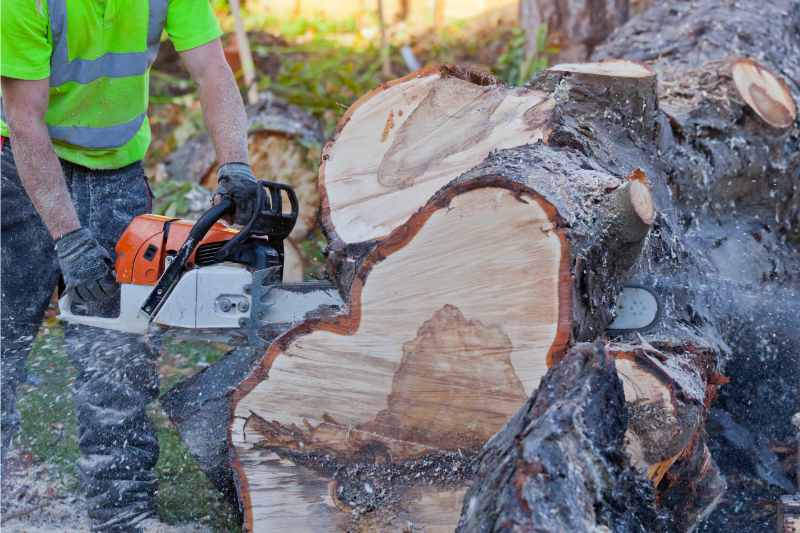
Trees affected: The European beech is the most common host of Phytophthora bleeding canker. Additional hosts include maple, American beech, birch, magnolia, dogwood, oak, horse chestnut, and walnut.
Symptoms: Phytophthora bleeding canker kills your tree’s bark and outer sapwood tissues. Reddish-brown sap oozes from bark cankers, staining the surrounding bark as it flows downward. Infected bark often appears water-soaked and stained, while the inner sapwood can host a variety of colors, including brown, orange, pink, and blueish-green.
Causes: Several species of Phytophthora (a fungus-like organism) cause Phytophthora bleeding canker, such as P. cactorum, P. cambivora, P. gonapodyides, P. pini, and P. plurivora. These species thrive in wet soil. Splashing rain spreads the spores from the soil to the lower trunk.
If wounds are present in the bark, the infection then takes place. Phytophthora will now survive as resting spores in the bark cankers.
Treatment: Phosphorous acid is effective against Phytophthora, according to the Center for Agriculture, Food and the Environment at the University of Massachusetts Amherst. Avoid unnecessary bark injuries caused by mowers, trimmers, and vandalism, particularly near the soil line.
A thick layer of mulch around the base of your tree can help prevent spore germination from the soil. Avoid planting your tree in susceptible locations with wet or saturated soils.
Risk: Phytophthora bleeding canker may not pose a serious threat to your tree.
5. Cytospora Canker

Trees affected: Cytospora canker affects many trees, including apple, aspen, birch, cherry, cottonwood, honeylocust, Lombardy Poplar, mountain ash, peach, plum, Siberian elm, silver maple, spruce, and willow. Some Cytospora species are host-specific and will not spread to other species of trees.
Symptoms: Yellow, orange-brown, or black discolored areas appear on the bark of the trunk and branches. Sunken cankers develop on the bark along with black, pinhead-sized pimples. Dead bark may fall off in large pieces after remaining attached to the tree for several years.
Causes: Various species of the fungus Cytospora cause Cytospora canker. The fungus attacks trees that are injured or in a stressed condition. The pimples appearing on the cankers are the reproductive structures of the fungus.
Under moist conditions, spore masses may ooze out of the pimples in orange, coiled, thread-like tendrils.
Treatment: A necessary control method is to prevent tree stress. Stressed or wounded trees are the most vulnerable to this fungal disease. Prepare the soil before planting, apply fertilizer, provide enough water, prune, and avoid injury to the trunk and limbs. Prune or cut trees only during dry weather. Clean and sanitize tools to ensure you are not spreading any spores.
Carefully cut and remove all injured or diseased bark back to live, healthy tissue. Do not apply any tar or oil-based paint to the healthy tissue. According to the Colorado State University Cooperative Extension, the best method is to allow the clean, healthy tissue to dry out.
Risk: Cytospora canker can kill your tree. This disease is most common in trees over 15 years old but may occur in younger trees.
6. Anthracnose
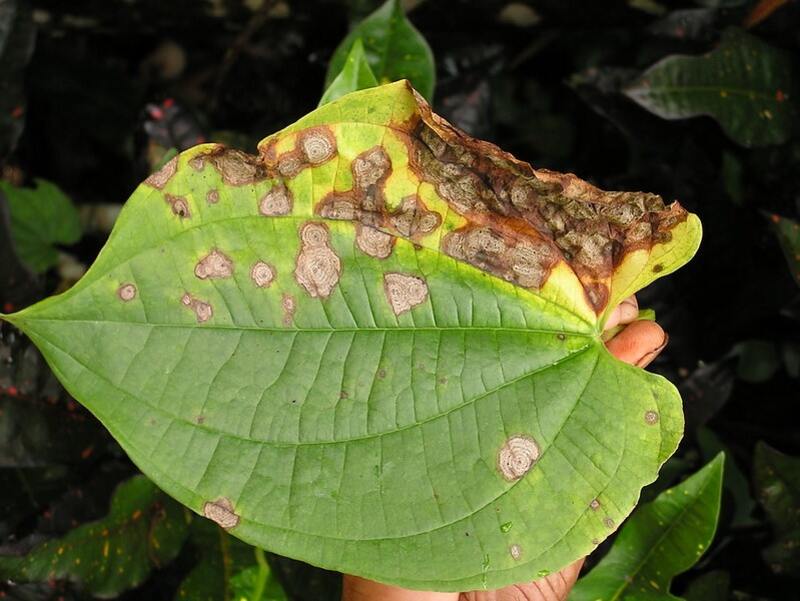
Trees affected: Many deciduous hardwoods are susceptible to anthracnose.
Symptoms: Symptoms of anthracnose are:
- Small dead spots on leaves
- Dead leaf tips
- Dead leaf areas along the veins
- Premature defoliation
- Twig death from girdling cankers
Pimple-like fruiting structures begin to form on the underside of infected leaves and near the ends of branches.
Causes: There are various species of the fungus Apiognomonia. The fungus overwinters in cankers of infected branches and twigs. The fungus may even survive in fallen leaves. The wind carries the fungal spores from the cankers to leaves and twig tissue.
The fungus then forms a new generation of spores on the infected leaves and twigs, spreading to nearby trees by rain or wind.
Season: Anthracnose favors cool weather with temperatures of 50 to 55 degrees during leaf bud break (when green leaf tips are visible). Spreading can occur whether conditions are dry or wet. Anthracnose is usually not severe if daily temperatures average above 60 degrees at bud break.
Treatment: Prune and burn dead branches and twigs. Rake and destroy all leaves around any susceptible trees. The PennState Extension recommends protecting your trees with fungicides beginning at bud break and repeating application weekly or biweekly until daily temperatures are above 60 degrees.
Risk: Anthracnose does not typically kill trees but it will kill twigs and buds. The disease may weaken your tree and make it vulnerable to other diseases.
7. Powdery Mildew
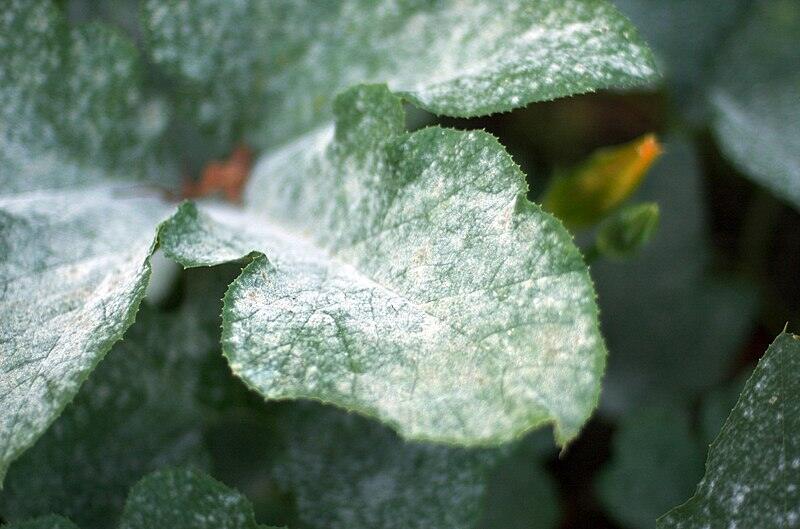
Trees affected: Powdery mildew can affect many trees. The most common include:
- Ash
- Maple
- Basswood
- Dogwood
- Lilac
- Magnolia
- Crabapple
- Catalpa
- Oak
Symptoms: A closely related group of fungi causes powdery mildew. These fungi grow on the upper and lower leaf surfaces, young stems, shoot tips, blossoms, and flower buds. The fungi produce microscopic chains of spores that give the infected areas a white powdery appearance. Infection may cause:
- Leaf yellowing
- Browning
- Distortion
- Premature leaf drop
Cause: The powdery mildew fungus overwinters inside infected buds. When the buds open in spring, they become covered with powdery spores, which the wind carries to infect new leaves, fruit, and shoots.
Treatment: Treating your tree with a registered fungicide may also help to control powdery mildew.
Prevention:
- Plant susceptible trees in areas with adequate sunlight and good air circulation to reduce moisture.
- Prune your plants to ensure air circulation.
- When choosing the trees to plant in your yard, consider selecting resistant cultivars.
Risk: Powdery mildew is rarely lethal. Young trees growing in heavily shaded areas are the most affected by this disease.
Note: Powdery mildew can also be an issue for your lawn.
8. Shot Hole
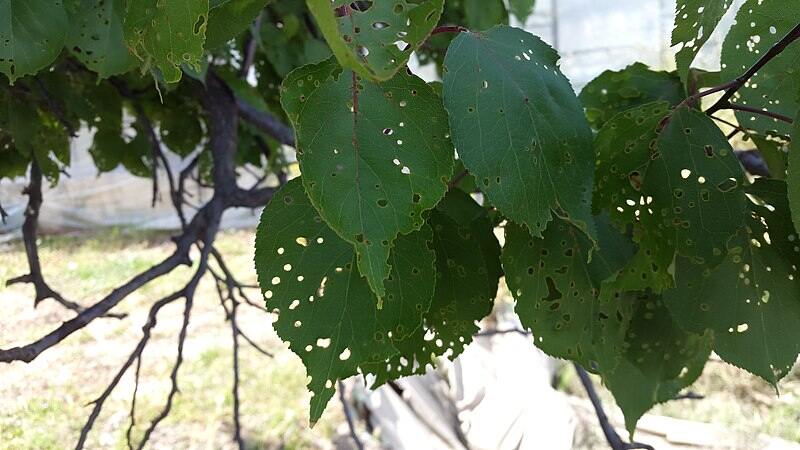
Trees affected: Shot hole fungus affects many fruit trees, including peach, nectarine, apricot, cherry, plum, and almond trees.
Symptoms: Fruit lesions may develop in wet, spring weather. Twigs may develop small, purplish-black spots. These spots enlarge, turn brown, and form a light center. Tiny, dark brown bumps will begin to appear at the center of each spot. These bumps are spore-producing structures called sporodochia.
Infected buds may have dark brown or black scales and have a shiny gum layer. Foliage will often wilt. Leaves and fruit may develop purplish spots that begin to turn light brown in the center as they enlarge. The leaves, not the fruit, will then form sporodochia. The brown centers of the spotted leaves will fall out, causing the leaves to have a “shot-hole” appearance.
Causes: The fungal plant pathogen Wilsonomyces carpophilus survives on infected twigs and buds. Through the winter, spores are produced and spread by splashing rain and wind to infect other trees. Shot hole disease thrives in wet, moist conditions, which is why the lower part of the tree, which stays wet the longest, tends to experience more infection.
Treatment: Treatments include pruning and destroying infected wood. Fungicides can help protect buds and twigs from infection. When irrigating your trees, keep the water low enough that it does not wet the tree’s canopy.
Risk: Shot hole disease will often kill your tree’s buds and cause significant damage to the leaves.
9. Verticillium Wilt
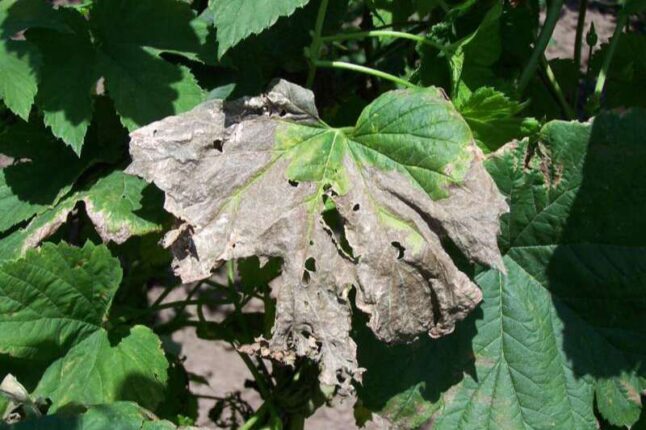
Trees affected: Redbud, hard maple trees, and smoke trees are especially susceptible to verticillium wilt. Yews and conifers are resistant. The Purdue University Cooperative Extension has an extensive table on resistant and non-resistant woody plants. More than 300 plant species are susceptible to this disease.
Symptoms: Leaf edges turn yellow, then brown and dry. Sudden wilting on one or several branches may occur. It’s often only one side of the tree that wilts. The wood underneath the bark of drooping branches often has discolored streaks. You may notice the wood’s discoloration after pruning.
Causes: Trees under drought, nutrient, or salt stress are more likely to experience this disease. The soil-borne fungus Verticillium albo-atrum causes verticillium wilt. Infection occurs in the root system, where the fungus produces resting structures that can survive in the soil for many years.
The fungi that grow from these structures may penetrate the roots and cause water movement within the tree to suffer.
Season: Symptoms occur in midsummer.
Treatment: Since the fungus can live for a long time underground, it’s best to plant resistant species in the contaminated soil. To delay the progression of Verticillium wilt, prune affected limbs and provide adequate water and fertilizer to your tree.
Risk: Verticillium wilt may kill your tree in a single season. Your tree may also survive for many seasons, with each branch slowly dying.
10. Sooty Mold
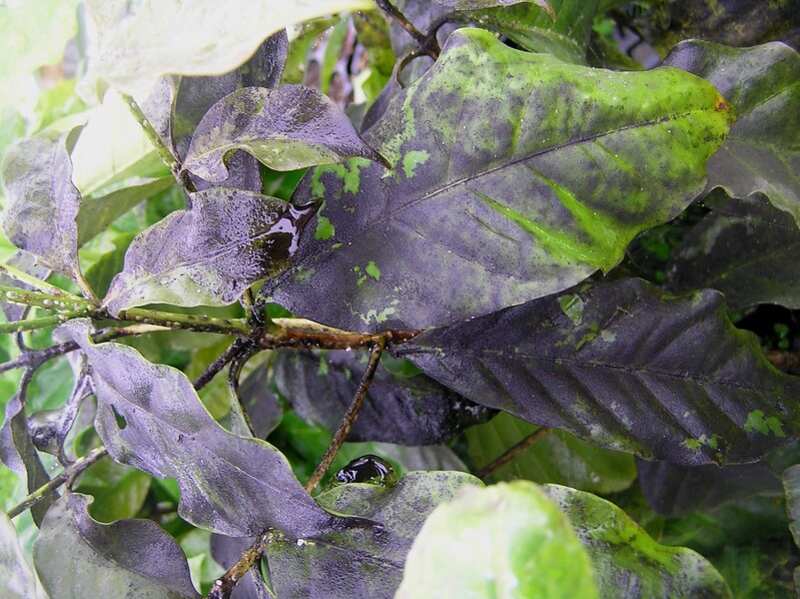
Trees affected: Sooty mold occurs in many deciduous and evergreen shrubs and trees.
Symptoms: Sooty mold is a black charcoal fungus appearing as soot covering the surfaces of leaves, fruits, twigs, and branches. This fungus obtains nourishment from honeydew, a sweet, sticky substance secreted by insects. These pests include aphids, mealy bugs, scales, and whiteflies.
On leaves, this coat of mold blocks sunlight and reduces the leaves’ ability to produce food.
Causes: Sooty mold typically occurs on trees and shrubs with lots of damage from honeydew insects. Honeydew, unless washed off by rain, will cling to the plant. The wind carries the sooty mold spores to the honeydew, which can then grow and develop on the honeydew.
As the spores germinate, they produce black fungus strands, called mycelial threads, that cause the black soot covering.
Treatment: When treating sooty mold, targeting these pesky insects is essential. At the first sign of aphids, mealy bugs, or whiteflies, the Cornell University Cooperative Extension recommends spraying the insecticide Malathion. Follow all labeled product instructions for the best results.
You can wash sooty mold off plants, but unless you control the honeydew insects, sooty mold will reappear.
Risk: Sooty mold will typically do little harm to your tree. However, if the disease is severe enough that the leaves cannot photosynthesize, then the leaves cannot create sufficient food for the tree.
FAQ
What Is The Most Common Fungus on Trees?
According to the University of Arkansas Division of Agriculture, “Powdery mildew is one of the most common plant diseases and is easily recognized. White spots or patches with a talcum powder appearance characterize this disease.”
Powdery mildew thrives in warm, dry weather. The plant’s succulent tissue becomes more susceptible to infection during this time.
Are Those Mushroom-Shaped Structures on Trees a Fungus?
Yes, they are called wood decay fungi. They can appear as mushroom structures in the soil or near or at the base of the tree. Also, shelf-like structures of fungi can grow on trunks and/or branches of trees. They can indicate root rot, butt rot, and root decay.
How Do Trees Respond to Wood Decay?
When a tree is wounded from mechanical or storm damage, it can’t fix itself like we do when we get a cut. Instead, it covers the damaged parts with a special tissue called woundwood.
This process, called compartmentalizing or walling-off, helps stop various types of fungus on trees from creating further damage.
Call In The Pros
Call a licensed tree care professional near you if you suspect your tree may have a fungal disease. It’s essential to have a tree disease taken care of right away. Otherwise, the fungal infection may spread to your healthy trees and cause significant damage to your landscape.
A professional arborist can apply a tree fungus treatment as needed, perform preventative maintenance, and safely remove an infected tree. Delay calling an arborist, and it may be the end of your beloved tree.
Main Photo Credit: Shuhrataxmedov / Wikimedia Commons / CC BY-SA 3.0 with text overlay